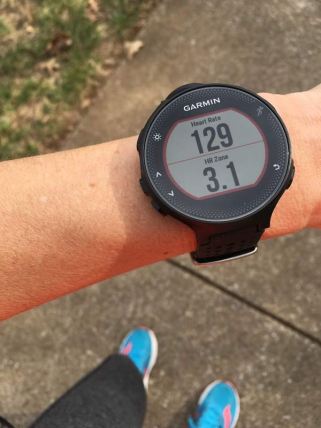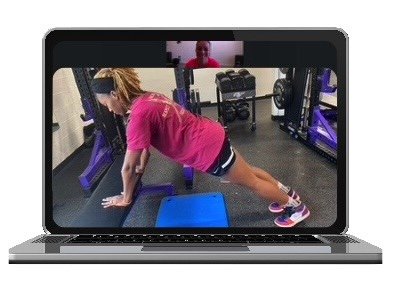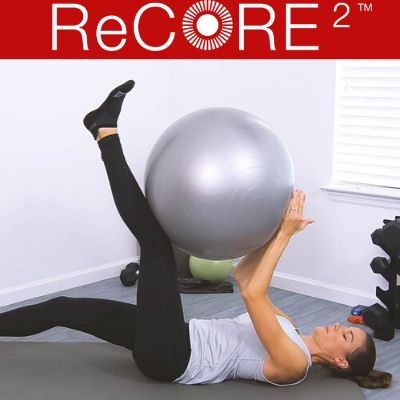Heart Rate Shmart Rate: Pregnancy and Exercise

There may be no greater taboo topic (other than who you voted for and what God you believe in) than pregnant women and exercise. Finger pointing, whispering, and gasps are the norm when a visibly pregnant woman hops on a treadmill. For some, it evokes the same feeling as a pregnant woman who smokes a cigarette. “How can she do that; doesn’t she know she’s hurting her baby?”

No major fitness brands cater to pregnant women, and clothing lines for the pregnant athlete are scarce. It’s close to being off limits. News flash, world: the data on no exercise for pregnant women are old and no longer relevant. It’s time to turn things up and break a sweat. Here’s why.
Exercise is Excellent for Everyone. Young, old, pregnant, and postpartum, exercise is a good thing. Physical activity has a positive impact on almost every organ and organ system in your body: hearts, lungs, brains, and bones. It also is a major weapon in the war against obesity, which we are currently losing big time as a country. Additionally, those of us who move on a daily basis not only look better but also feel better. (The chemicals that bring you up are released into the brain during and after exercise. They will keep you flying high for many hours post-workout).
Exercise in pregnancy achieves all of the above benefits, plus some others. Women who get to the gym when expecting should expect a lower chance of gestational diabetes, macrosomic (large) babies, high blood pressure, and excessive weight gain. And we OB/GYNs are not the only ones endorsing exercise in pregnancy. The US Department of Health and Human Services recommends that healthy pregnant and post-partum women participate in at least 150 minutes per week of moderate-intensity aerobic activity. They are also cool with women who like to take it up a notch, which means those who engage in vigorous-intensity aerobic exercise can keep it up.
While we are not telling you to go out and achieve your PR in the marathon or train for an iron man (or woman!) in the dead of summer, we are telling you to get out, get active, and stay fit. You will have to make modifications in your regimen. You will have to share your big news with your fitness instructor. You will have to stay extra hydrated and wear loose, breathable clothing. But if given the all clear by the OB, you won’t have to sit on the sidelines.
In pregnancy, our bodies change big time (no brainer). But it’s not just that belly that we acquire; it’s also a shift in the point of gravity, laxity of the ligaments/joints, increase in blood volume, and decrease in vascular resistance. The last two are what can make you feel lightheaded and your legs swollen. Be conscious of these differences. Your awareness will keep you out on the track, in the studio, or on the mat longer.
Not every pregnant woman can bike, spin, or lift weights. Some pregnancies are more complicated, and the pregnant woman can’t exercise ad lib. For this reason, it’s important to be as open and honest with your OB/GYN about what you want to do as you would with your trainer as to what you want to build. We need to know what you’re doing so that we can tell you what is okay to do.
There are certain medical conditions (restrictive lung disease, severe anemia, heart disease) as well as specific obstetrical conditions (incompetent cervix, placenta previa after 26 weeks, premature labor) where exercise is prohibited. In addition, if you were a couch potato before pregnancy, it’s probably not the best idea to start doing boot camps once you pee on the stick. A more gradual progression into exercise is probably the way to go.
No one really knows where that magical 140 (maximum heart rate for a pregnant woman) number came from. We have searched textbooks (both online and in print) to find out why this number?? We got nothing good! And that’s because it was never based on any real data. The new recommendations from the American College of Obstetricians and Gynecologists on Eexercise and Pregnancy no longer stipulate that heart rate be used to assess how hard a woman is working when she is working out. We now recommend using “ratings of perceived exertion” to monitor exercise intensity (a 15-grade scale; very, very light very, very hard).
Using the “talk test” is another way to measure exertion. (We prefer the “sing test”: can you sing the song playing on your iPhone?) Although we don’t want to hear you belting out the lyrics to “I Will Survive,” we do want to know that you will survive this workout class. If you can sing or talk, you can breathe, and if you can breathe, your baby is getting oxygen—and then you are all good.
Exercising in pregnancy has been viewed as selfish. Here’s what they say: Women who exercise care more about their bodies than their babies. Women who exercise are vain and self-centered. Women who exercise are not good mothers-to-be.
This is downright bogus and simply BS. Studies show that babies actually like exercise just as much as their mothers do. While their heart rates increase, their birth weight does not decrease. In fact, babies born from mothers who exercise see benefits, from their brains to their bodies to how they are birthed (C-Section vs. vaginal delivery).
Exercise is good for both parties, mother and baby. While we may not be there to run beside you during this pregnancy, we can offer you a few parting pieces of advice:
- Make sure to stay cool (don’t exercise in a 100-degree basement!).
- Make sure to stay well hydrated.
- And make sure to stay well nourished, with adequate caloric intake.
Other than that, lace up your sneakers, clip into the saddle, or roll out those yoga mats. It’s time to get moving!





















We, Jaime and Sheeva, are fertility specialists who work and live in New York City. For a full run-down of education and articles written, click here. Our practice is devoted to helping women achieve their goal of parenthood. Using a team approach (two minds are always better than one) rooted in honesty and transparency, we are... Read More